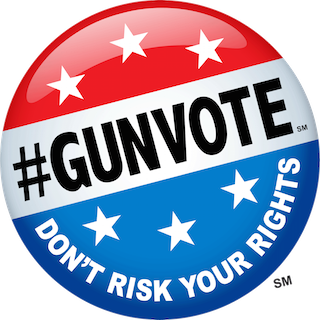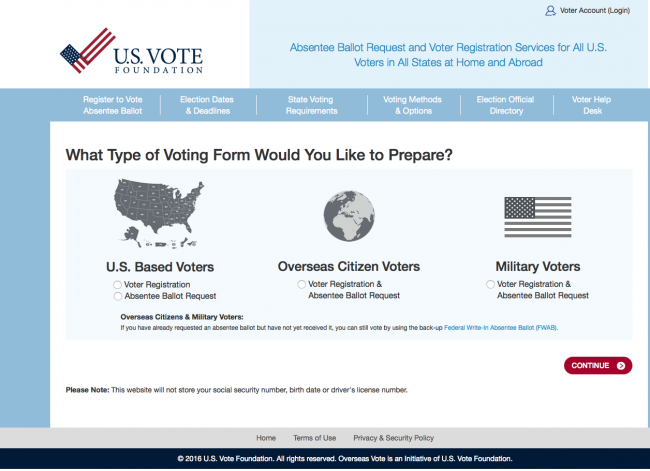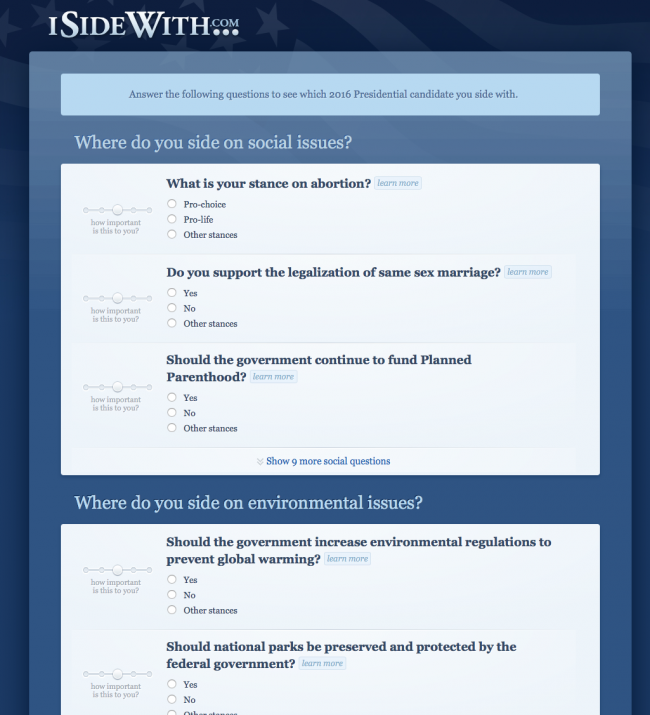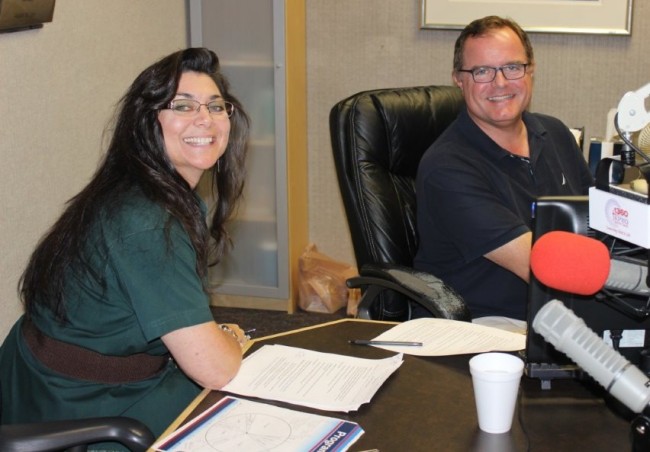Election-Year How-To Checklist: Are You an Informed Voter?
Here is your election-year checklist for voting:
#1) Get Informed
#2) Register
#3) Find Out Which Candidates You Align With
#4) Talk to Trusted and Knowledgeable People; Compare Notes
#5) Make It a Family Matter
#6) VOTE

The Flame is sponsored by AZfirearms.
Your Election-Year How-To-Checklist
In 6 quick and easy steps you can be an informed voter. One of the most precious rights we have in the United States is the ability to affect change at the ballot box. Sometimes the fervor of an election season can become overwhelming and cause people to feel lost in sorting out the details of how to vote, and for whom. Never fear, help is here!

The National Shooting Sports Foundation offers an excellent resource for people wanting to follow Second Amendment and gun voting issues at its #GUNVOTE website.
1) Get Informed
This is the first and most important step! You will want to gather information from a variety of sources so that you form a well-rounded opinion about the candidates and the issues of each voting season. The Internet is an excellent place to go for news and insights, but it can also be a rabbit-hole of never-ending and conflicting stories. Here are a few tips for your research sessions:
- Keep each session brief. Fifteen minutes at a time is enough to give you some food for thought.
- Try to find two articles per research session: one from a “pro” source and one from an “anti” source. (Hint: Always read a website’s “About Us” page to look for signs of possible bias in their writing.)
- Always employ critical thinking strategies as you read.
- Look for signs of intellectual honesty in the content of each article.
 2) Register
2) Register
This is the second and most important step! In order to be eligible to vote in each election you will need to have a valid voter registration. If you have recently moved, or are a member of the armed services, you will need to be sure you have registered within the time limits imposed by each election cycle. Registration rules and deadlines differ from state to state.
- There are online sources to help you get registered. (Hint: Be sure you trust the site you are using and that the site has a security certificate. Glance at the browser window and look for https:// at the beginning of the url. The “s” indicates that you are on a secure site.)
- Know any specific state requirements well in advance of voting day.
- Many people register to vote at the Department of Motor Vehicles (DMV) when they obtain or renew their driver’s license.
- Even if you’re certain that you’re eligible to vote, it’s still a good idea to check your eligibility to vote early in any election cycle. (Hint: If you are registered as a member of any party other than the Republicans or Democrats, check with your state officials for your eligibility to vote in presidential primaries).
- Each state’s secretary of state is in charge of elections, and their office is a great source of information about the specifics of your city and state.

3) Find Out Which Candidates You Align With
This is the third and most important step! (Are you starting to see a theme here?) While we live in the United States, which was designed by our Founding Fathers to be “of the People, for the People, and by the People,” and in an ideal world our representatives’ personal opinions would not factor into representing the will of their constituents, it is important in this imperfect world to know how your candidates’ have previously voted on any given issue.
- Check online for resources to aid in determining how to judge candidates in general.
- Be aware that different online resources use dissimilar criteria and not all of them score every candidate, but previous voting records are very helpful in judging the candidates and understanding who you are voting for.
- There are survey-style sites which allow you to answer a variety of questions to be electronically and statistically “matched” with specific candidates. (Hint: Be sure to read each website’s “About Us” page to look for signs of possible bias in their surveys and results. One red flag to look for is who provides funding for the website.)
- As election day gets closer check back in with these types of sites to see if your opinions have changed, or if new information about specific candidates has changed over time.
4) Talk to Trusted and Knowledgeable People; Compare Notes
This is the fourth and most important step! Talking over issues with people whose opinions you respect and value is vital to weighing out each topic. Choose a friend or family member with whom you can respectfully disagree. Challenge your own beliefs and opinions in this part of the process. Don’t be afraid to change your mind, or come to a new place of realization if you are presented with compelling facts and information. Seek out information from a variety of sources, including articles based in facts, emotions, and spirituality.
- Read the Constitution of the United States. It is a mere 4,400 words and will take about 20 minutes to read.
- Scholarly information does not always have to be dry and dull. There are entertaining and informative sites online that can help educate and inform without putting you to sleep. (Hint: Be sure to read each website’s “About Us” page to look for signs of possible bias in their writing, and always be aware of who provides funding for the website.)
- Information grounded in timeless texts and historical documents can help us to see issues from a historical perspective and the proverbial thousand-foot-view. It is perfectly acceptable to seek spiritual counsel from a priest, pastor, rabbi, or the like before casting your vote.
- You can also find discussion forums online for a variety of specific topics. One thing to keep in mind on forum sites is that bias is going to be strong there, if not necessarily by the organizer of the site, then possibly by the members who are chatting. Be mindful that while you can find some excellent debate opportunities, passions can run high on these sites.
- Many of us reading this blog are naturally concerned with our Second Amendment rights, and because of that I will list a few specific places where 2A news and information is readily available: NSSF Gun Vote, Jeff Knox’s GunVoter.org, NRA-PVF (Political Victory Fund), Second Amendment Foundation (SAF.org), and countless other organizations are involved in preserving, protecting and reclaiming all aspects of the Second Amendment.

5) Make it a Family Matter
This is the fifth and most important step! In order to preserve our freedoms we must involve and instruct our future generations on how the voting process works. To quote President Ronald Reagan, “Freedom is never more than one generation away from extinction. We didn’t pass it on to our children in the bloodstream. The only way they can inherit the freedom we have known is if we fight for it, protect it, defend it and then hand it to them with the well-taught lessons of how they in their lifetime must do the same. And if you and I don’t do this, then you and I may well spend our sunset years telling our children and our children’s children what it once was like in America when men were free.”
- Involve your children in your discussions about the political process of the United States.
- Allow your nieces and nephews to hear your reasons for voting and the steps you took in the voting process.
- Encourage your children to take a family vote on small things that are important to them, such as which game to play on game night, and which restaurant to choose.
- Look for online tools to help make this a fun and interesting process for kids. (Hint: Be sure to read each website’s “About Us” page to look for signs of possible bias.)
- Don’t be afraid to let your children see you say, “I don’t know,” and then involve them in doing the research to find the answer.
- Read the Constitution together with your children and your family.
6) Vote
This is the sixth and most important step! (In case you hadn’t figured it out, every step is important!) Be sure you follow through and actually cast your vote. You might hear some people say that they are only one person, and that their vote doesn’t count. The truth is, the only vote that doesn’t count is the one that isn’t cast. It counts to you that you are part of the process and allow your voice to be heard. It counts to your children and anyone else who watches you go through these six steps. And it counts to the future of our Republic, for which it stands, one nation, under God, indivisible, with liberty and justice for all.
-

About Cheryl Todd
Cheryl Todd is the executive producer and co-host of “Gun Freedom Radio,” owner of AZFirearms Auctions, Pot Of Gold Auctions and founder of the grassroots movement Polka Dots Are My Camo. Cheryl is the Arizona state director for The DC Project and travels the country speaking as a champion for our Second Amendment rights. She is a driving force in preserving the legacy of freedom for generations to come.
View all posts by Cheryl Todd →

 2) Register
2) Register